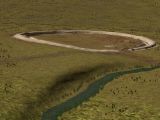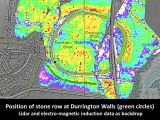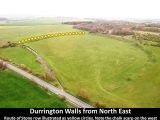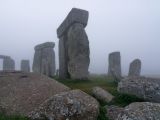This Monday, archaeologists working with the University of Birmingham and the Ludwig Boltzmann Institute for Archaeological Prospection and Virtual Archaeology announced the discovery of what appears to be a previously undocumented prehistoric monument buried not far from Stonehenge.
Using cutting-edge ground-penetrating radar, the research team zoomed in on around 90 mammoth stones hidden in the underground at a distance of less than 3 kilometers (2 miles) from Stonehenge. Judging by their arrangement in a long line, it is clear that somebody took great care positioning them.
Of the 90 or so stones the ground-penetrating radar detected at a depth of roughly 1 meter (3 feet), 30 appear to be intact. The rest show signs of damage. The stones are now all lying on one side, yet archaeologists managed to measure them and say some are as much as 4.5 meters (15 feet) tall.
“The Stonehenge Hidden Landscapes Project team, using non-invasive geophysical prospection and remote sensing technologies, has now discovered evidence for a row of up to 90 standing stones, some of which may have originally measured up to 4.5 meters in height,” the research team writes in a report.
“Hidden for millennia, only the use of cutting edge technologies has allowed archaeologists to reveal their presence without the need for excavation,” the investigators go on to detail.
The stones are as old as Stonehenge
If the stones are, in fact, the remains of an ancient monument, archaeologists estimate that the complex dates back to around the same time that Stonehenge was built. Thus, they say these stones arranged in a line curved towards one end appear to be around 4,500 years old, maybe a few centuries more.
The stones are positioned along the southeastern edge of what later became the so-called Durrington Walls superhenge, an almost circular settlement that was too erected some 4,500 years ago and that measured 1.5 kilometers (nearly 1 mile) in circumference and 500 meters (1,600 feet) in diameter.
In ancient times, this settlement was surrounded by a ditch up to almost 18 meters (60 feet) wide and then an outer bank around 40 meters (130 feet) wide and 1 meter (3 feet) tall.
Durrington Walls is among the largest henge monuments discovered so far. The newly documented row of stones sits along the superhenge's straight side. It is believed that somebody purposely toppled the stones over and built Durrington Wall's bank over them. Why they did so remains a mystery.
“Many of these stones have survived because they were pushed over and the massive bank of the later henge raised over the recumbent stones or the pits in which they stood,” researchers say.
A possible connection to Stonehenge?
Other than the fact that they sit quite close to one another, specialists are yet to find any connection between this recently discovered buried monument and Stonehenge. More so since neither of the stones has until now been excavated and properly examined.
All the same, it appears that the stones in this buried row are quite similar to the ones that were used to build Stonehenge. Hence, it could be that this other monument was created by the very same people who built Stonehenge.
Then, the same culture toppled over the row of stones and incorporated it into the emerging Durrington Walls by burying it under the settlement's bank, most likely because the stones and their arrangement were of special significance to them, archaeologists say.
Some think the stone line probably marked a ritual procession route and that this is why it was preserved and became part of Durrington Walls, but further investigations are needed to confirm this.
A representation of what the ancient row of stones looked like before it was buried is available in the video below. The animation also shows where exactly the stones lie hidden under the outer bank of the millennia-old Durrington Walls settlement.
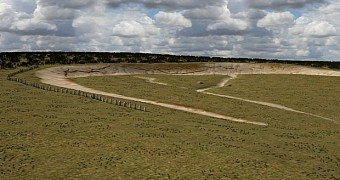
 14 DAY TRIAL //
14 DAY TRIAL // 

